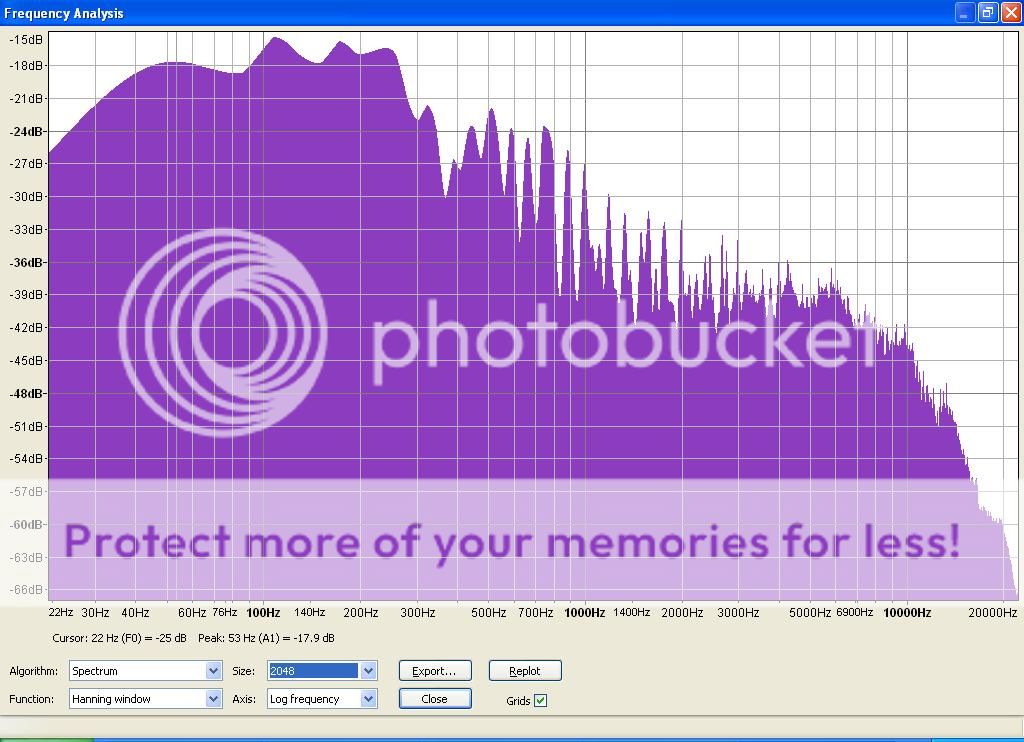MajorFubar
New member
- Mar 3, 2010
- 690
- 9
- 0
lindsayt said:Dave how many frequency spectrum charts do I need to post on this forum before you stop saying that there's not much going on at 30hz to 60hz in most music?
Here's a frequency spectrum chart of Suzanne Vega's Solitude Standing, vinyl version.

It's a 27 year old recording with more going on at 30 to 60 hz than at any frequency above 520 hz.
Where did you get the notion from that there's not much going on at 30 to 60hz with most music?
Lol from an LP most of that will be bloody rumble.

